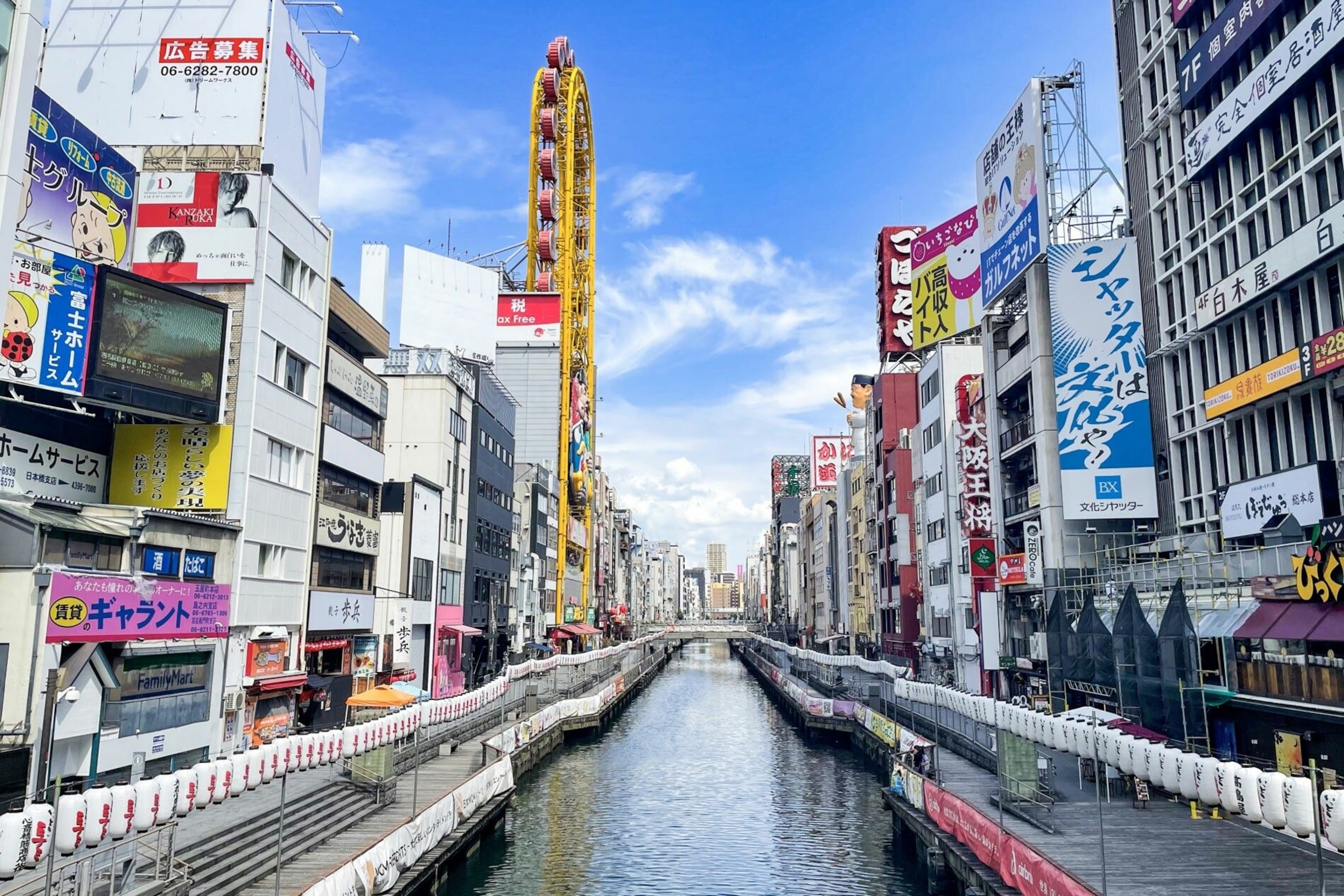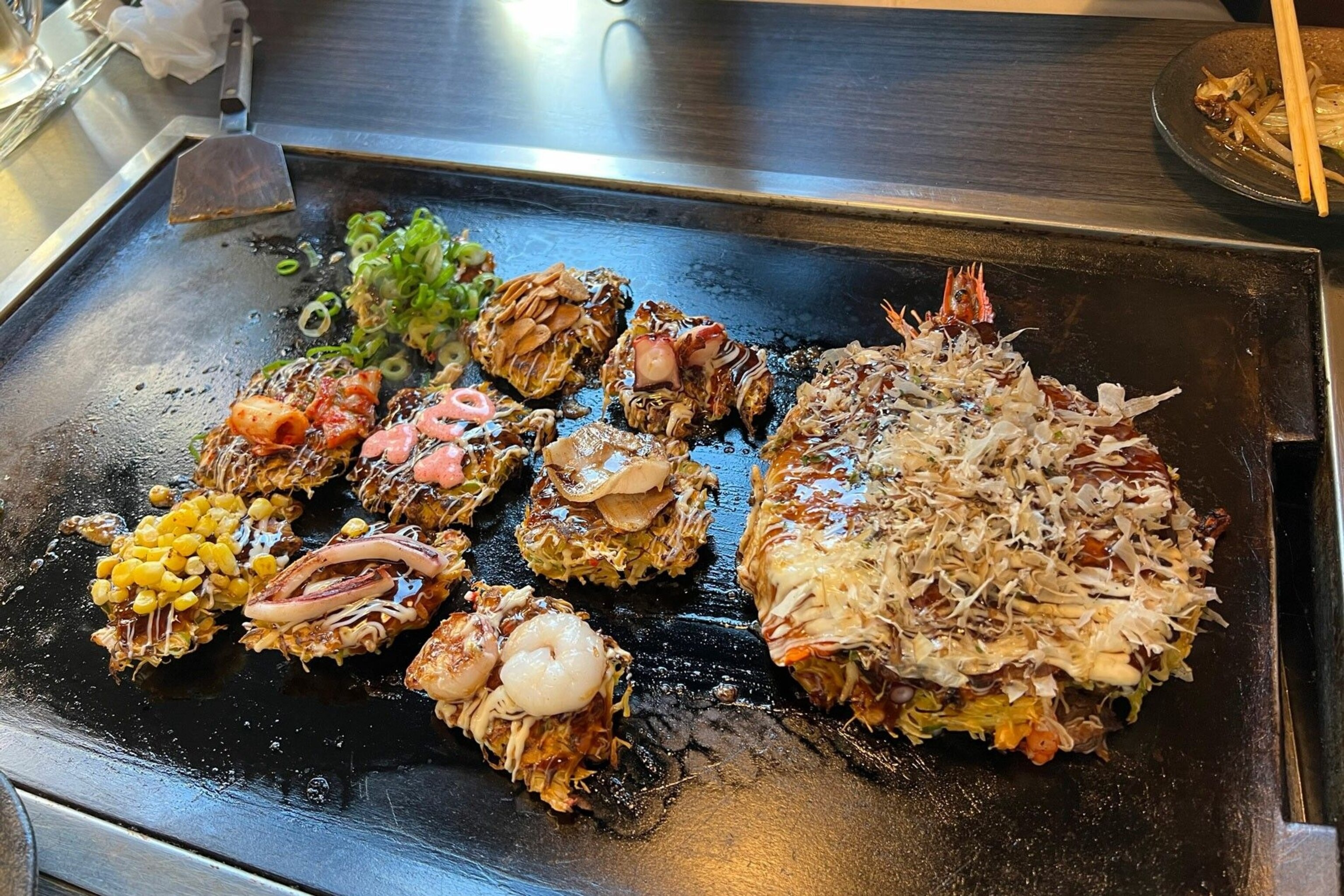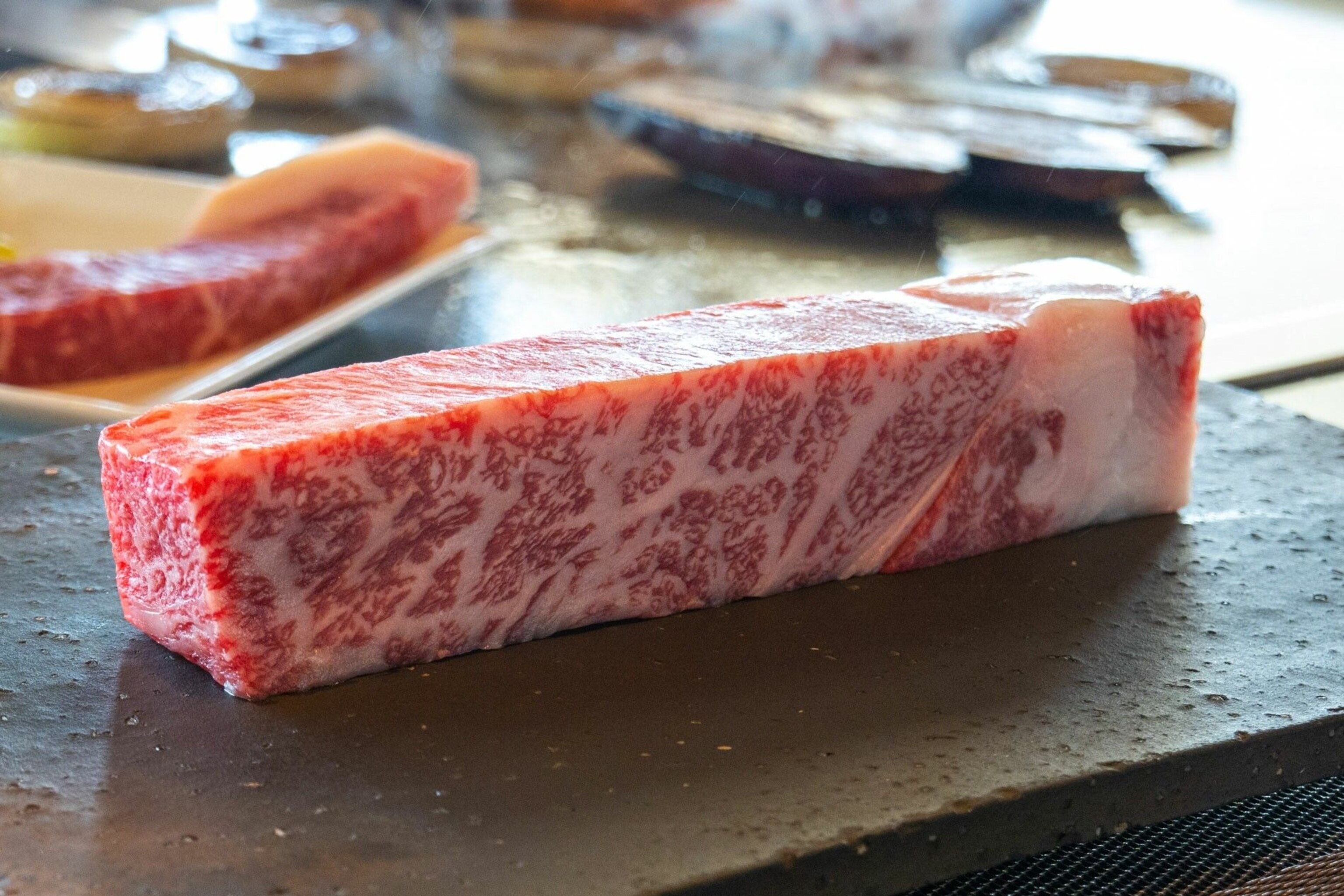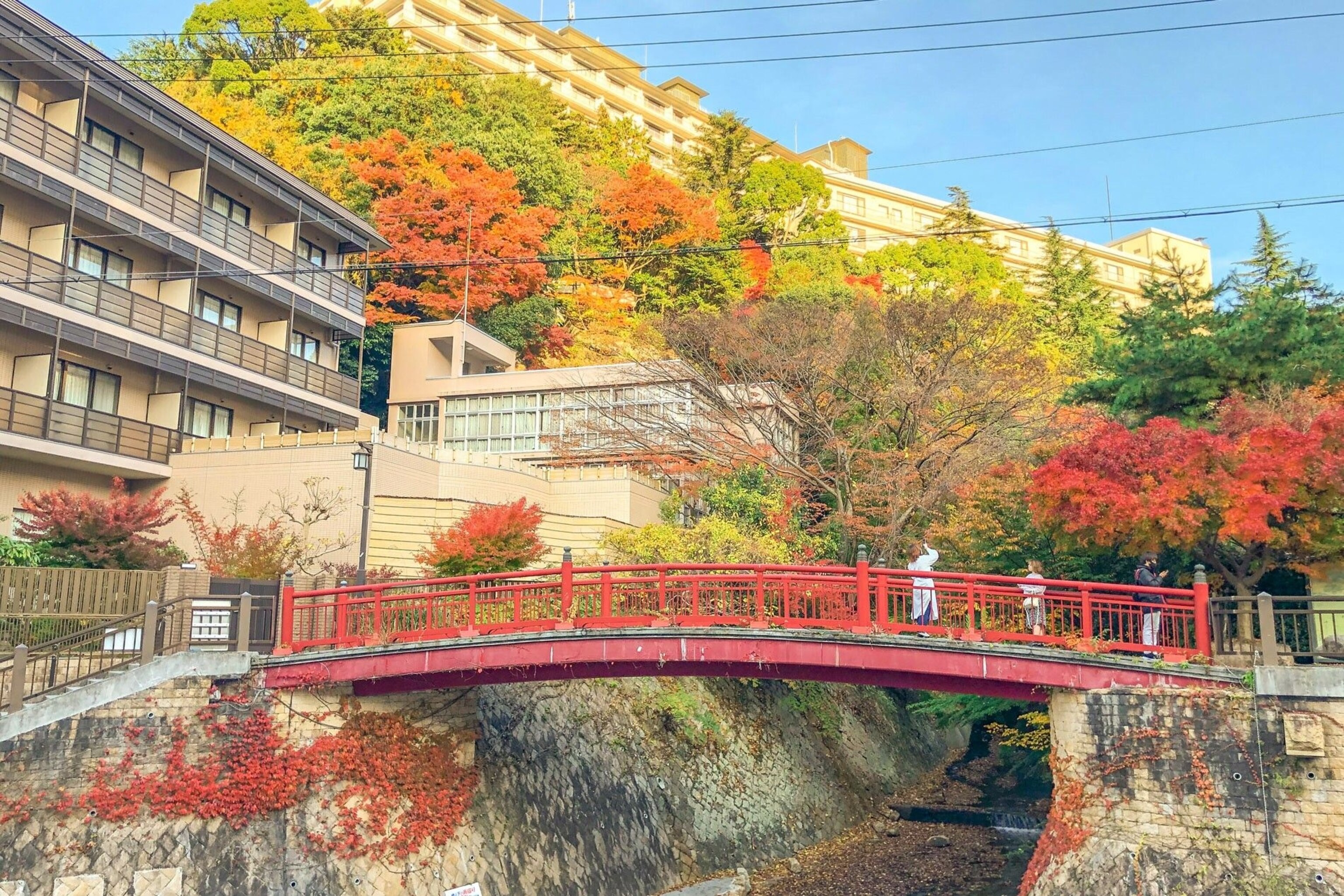
Beyond Kyoto: five alternative cities in Japan’s Kansai region
Renowned for its towering Osaka and Himeji castles, Zen gardens and fresh, seasonal cuisine, Kansai is widely considered Japan's cultural and historical heartland. Here, we round up five of the region’s best cities to discover.
Kyoto may be considered by some as the crowning jewel of Kansai, but there's so much more to this region of Japan than its ancient capital. From the urban environs of downtown Osaka to the tranquility of monastic life in Koyasan, Kansai is home to an eclectic collection of attractions and is widely regarded as Japan’s cultural and historical heartland. It’s here you can discover ancient technology and archaeological mysteries in Sakai city, learn about authentic Samurai culture on Himeji's Mount Shosha and delve into delectable culinary delights in Kobe city. What’s more, all five cities are conveniently located near Kyoto, making it easy to step off the beaten track and experience something new.
1. Osaka
The culinary capital of Japan
Kyoto may be the most well-known city in Kansai, however Osaka is the true culinary capital of the region — and while many come to the metropolis for Universal Studios Japan, Osaka has various other locales worth exploring. On the historical side, the city is proudly home to the eight-storey Osaka Castle, one of the most visually spectacular creations in the country with a history dating back some 450 years. Although the keep is a modern reconstruction, much of the other infrastructure is authentic and even houses a fascinating museum about Osaka castle.
By contrast, Osaka has many modern attractions to discover such as The Umeda Sky Building — an engineering marvel that affords epic skyline views. The lively entertainment and nightlife area of Dotonbori is also well worth a visit, famous for its striking neon lights, extravagant signage and huge variety of high-end restaurants such as Ichii.
While Dotonbori is known for its urban charms, this part of Osaka has a historic side, too. The area of Hozenji Yokocho, for example, is a traditional slice of Osaka sandwiched between Dotonbori’s neon lights and Namba’s shopping area. Here, you can find bars and long-standing Japanese restaurants serving traditional dishes such as okonomi-yaki (Japanese pancake), kushi-katsu (skewered and fried meats and vegetables) and Meoto Zenzai (an iconic traditional dessert of Hozenji Yokocho).


2. Kobe
A bustling, cosmopolitan port city
Surrounded by the sea to the South and the Rokko Mountains to the North, Kobe is the capital city of the Hyogo Prefecture and the seventh largest city in Japan. It's also the origin of the world-famous Kobe beef — a delicacy which comes from certificated Hyogo's Tajima breed of Japanese black cattle (which meet quality standards) and is valued for its flavour, tenderness, and fatty, well-marbled texture. To taste this iconic dish, head to Kobe Meriken Park Oriental Hotel’s Steak House Oriental which offers carefully selected, seasonal ingredients cooked right in front of you and panoramic views of Kobe's cityscape.
Start the city sightseeing by visiting Takenaka Carpentry Tools Museum. First opened in 1984, the sleek, contemporary exhibition is the only one of its kind in Japan, displaying both real and recreated carpentry tools dating from prehistoric to modern times. Divided into seven sections, the museum shares not only the history of various Japanese tools, but also detailed stories about the masters and artisans who used them.
Kobe is also home to Arima Onsen, one of Japan's oldest and most famous hot spring towns. Enjoy a daytrip here or, for the full immersive experience, opt for a one- or two-night ryokan stay, which is a Japanese-style inn with tatami-matted rooms, communal baths, and other public areas.
Around an hour of trekking will bring you to the top of Nunobiki area, located right by the bullet train station. The area is famous for its various picturesque walking trails lined with trees, viewpoints and monuments. For those wanting something less strenuous, the Kobe Nunobiki Ropeway offers a comfortable 10-minute ride to the top, revealing sweeping views of the city and the impressive, 140ft Nunobiki Waterfall. Once there, don’t miss the Kobe Nunobiki Herb Gardens — Japan’s largest herb garden home to 12 extensive gardens, around 75,000 seasonal herbs and 200 different types of flowers blooming throughout the year.


3. Sakai
For ancient technology and archaeological mysteries
Located to the south of Osaka, Sakai rarely pops up on the radars of overseas visitors — and although technically still located within the confines of the same prefecture, Sakai stands in stark contrast to Osaka's neon glow. But you don’t know what you are missing as there are a handful of things you can do in the city.
The main reason to visit Sakai is the Mozu-Furuichi Kofun cluster — a group of more than 100 tumuli (ancient burial mounds) that were recently awarded UNESCO World Heritage status. Of all the structures, the Nintoku-Tenno-Ryo Kofun is the most impressive: at 1,594ft long, it’s one of the biggest tombs in the world and allegedly belongs to Japan’s 16th king. Once you’ve finished exploring the kofun, the newly developed Mozu Mounded Tombs Visitor Center is well worth a visit to understand fundamental knowledge of the kofun and ancient Japanese history. Don’t miss Kofun-Mae Cafe Iroha if you’re hungry, as all of the dishes take inspiration from the tumuli.
Sakai is also known for its craftsmanship and produces some of the best knives in all of Japan. For an authentic experience, Enami Hamono open factory offers various hands-on workshops where you can forge handmade blades and shape knives in one of the three shapes, including Santoku, Kansai or Kanto style. Additionally, given that Sakai was the birthplace of Sen no Rikyu (one of Japan's greatest and most influential tea masters), the city is a fantastic place to experience the Japanese tea ceremony: the Sakai Plaza of Rikyu and Akiko has authentic chanoyu (tea ceremony) rooms where you can admire the hanging scrolls, tea cups and learn about the traditional etiquette.


4. Koya
The heart of Shingon Buddhism
While Sakai may be a relative newcomer to the scene, Wakayama’s town of Koya is no stranger to inbound tourists. In 816, Buddhist monk Kobo Daishi founded Koyasan on a plateau located within the Kii Mountains as a centre for the study of Shingon esoteric Buddhism. Currently, there are 117 temples in Koyasan, with Kongobu-ji being the head temple, and countless visitors have come to pray at the sacred grounds within Koyasan.
This part of Japan is frequented by those looking to stay overnight at a temple. This style of lodging, known as shukubo, is becoming increasingly popular with visitors to the country, allowing them to partake in authentic monastic life. Here, you’ll be served shojin ryori (a traditional, flavoursome plant-based Buddhist cuisine) and can engage in several religious ceremonies, such as Ajikan (a form of meditation) and goma prayer (a fire ritual in which wooden prayer sticks are burned in a consecrated flame).

5. Himeji
A time capsule of Samurai culture
Located only half an hour by train to the west of Kobe city, Himeji is best known for its spectacular feudal castle. Often referred to as the white heron castle due to its elegant, white appearance, imposing size and well-preserved castle grounds, this UNESCO World Heritage site and national treasure is widely considered to be the best of Japan’s 12 remaining strongholds. Unlike many modern reconstructions, the interior hasn’t been transformed into a museum and maintains much of its authentic atmosphere.
Himeji has a lot more to offer. Perched atop Mount Shosha, overlooking the town, stands the Buddhist temple of Engyoji where many of the scenes in The Last Samurai were filmed. Afterwards, Nadagiku Sake Brewery, which is only a short hop away from Himeji station, is a fantastic stop to see the process of how sake was made in the past.


Plan your visit
Where is Kansai
Kansai is in the western region of Honshu and comprises seven prefectures, including the two large urban prefectures of Osaka and Kyoto. Osaka City is at the center of the region, surrounded by Himeji and Kobe to the west. Sakai City, which is also a part of Osaka Prefecture and Koya Town, located in the Wakayama Prefecture, are both in the southern area. The areas are introduced in this video.
Getting there & around
It’s hard to find a location more densely packed with attractions than Japan’s Kansai region. While this alone should be sufficient reason to consider it for your next trip, it’s also easily accessible from the UK with frequent flights from London Heathrow to Kansai International Airport. From here, you can find yourself in any of the cities featured in under an hour by intercity bus or train.
To make your trip to this area hassle-free, we suggest creating an itinerary starting in Osaka City to Kobe City and Himeji City, before looping back to Sakai City and Koya Town. Public transportation can be used as the primary method of travel. Moreover, given that Kansai is centrally located in Japan, it’s also extremely convenient for visiting other parts of the country, too.
Follow National Geographic Traveller (UK) on social media






